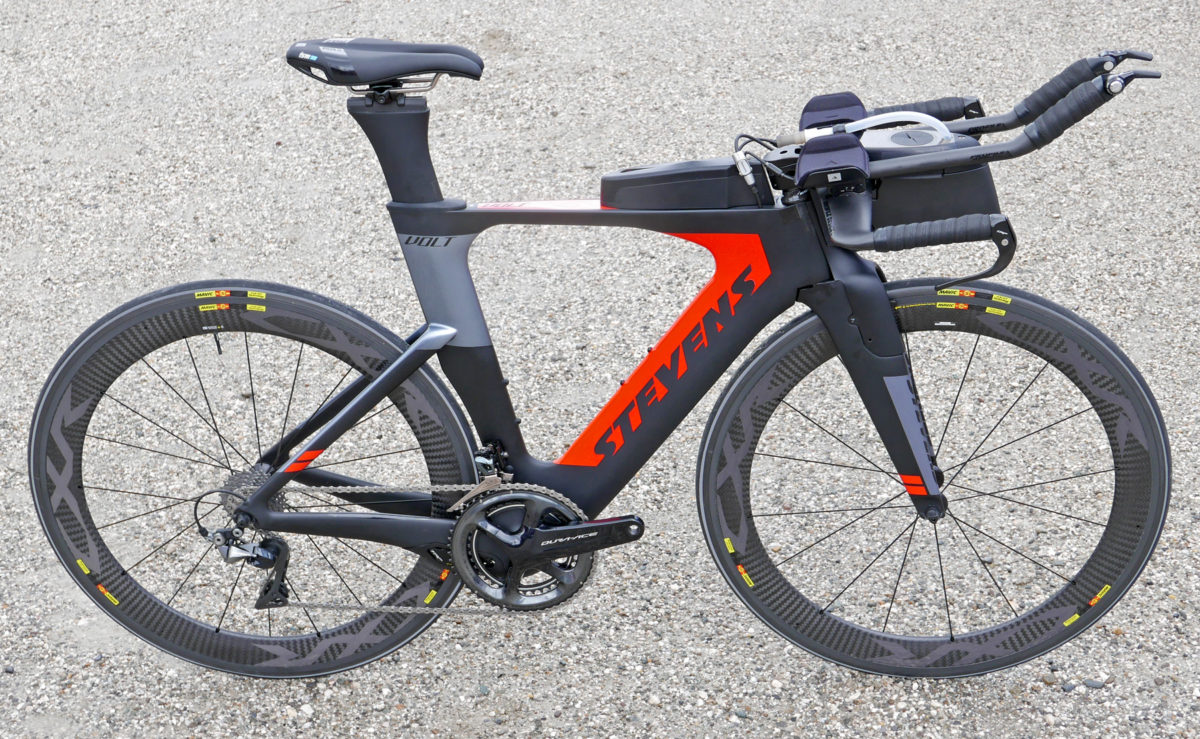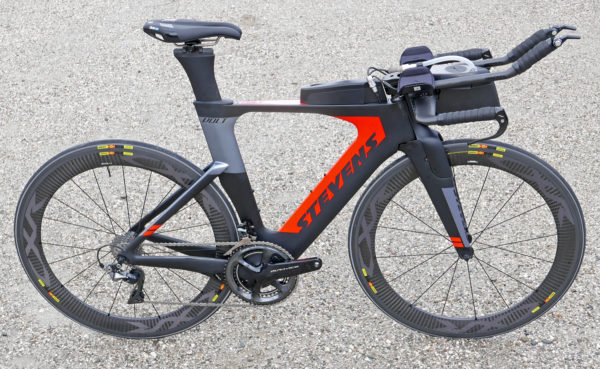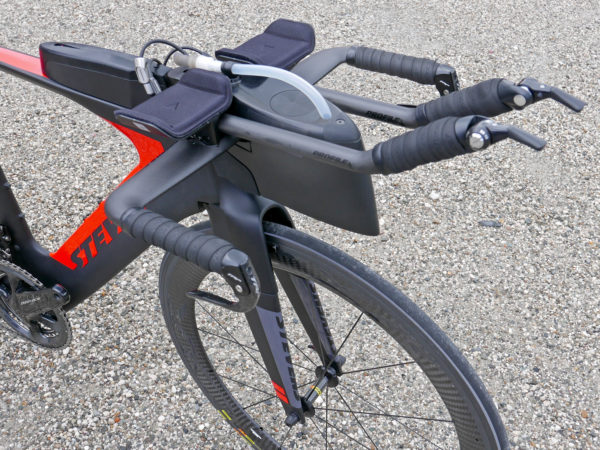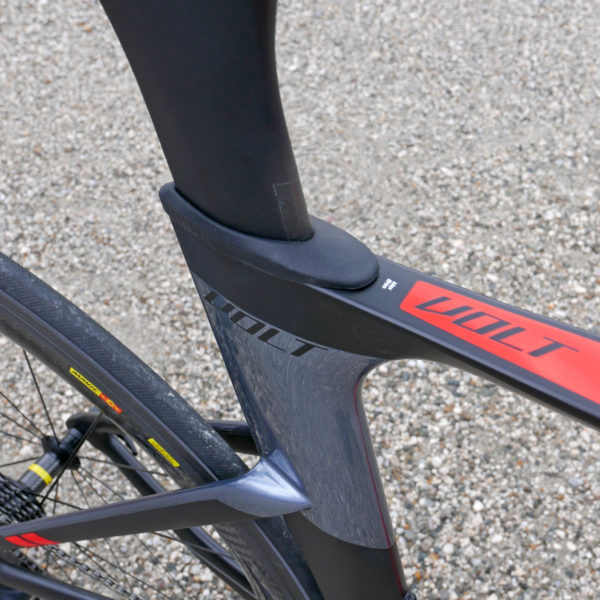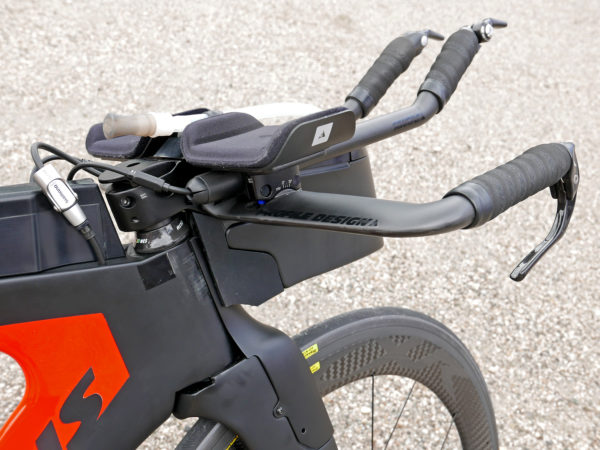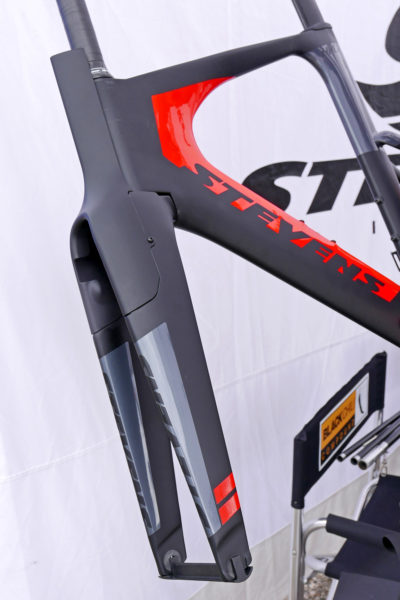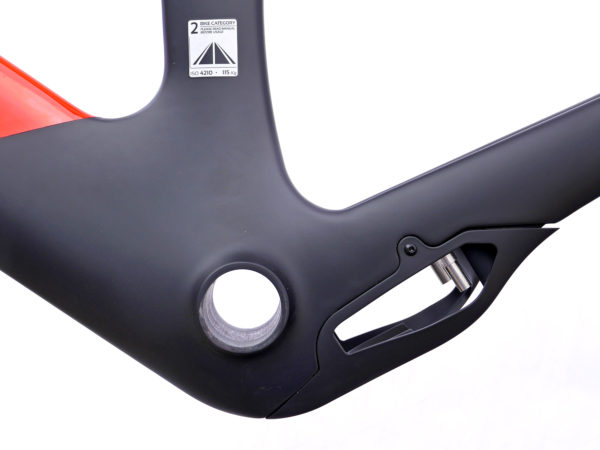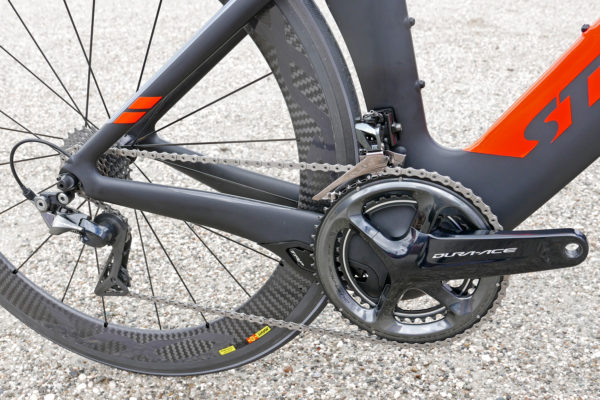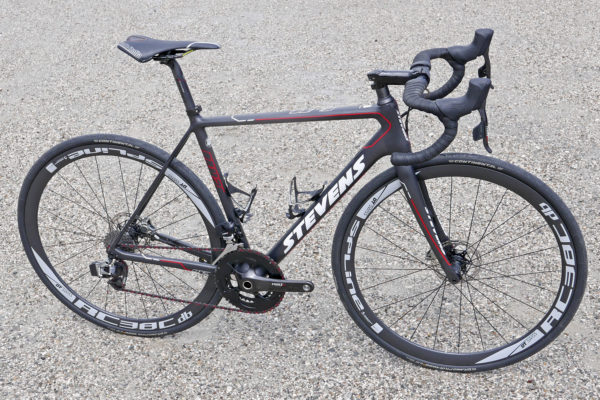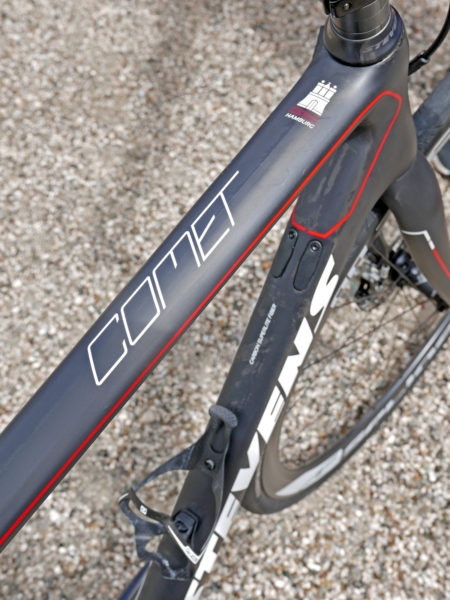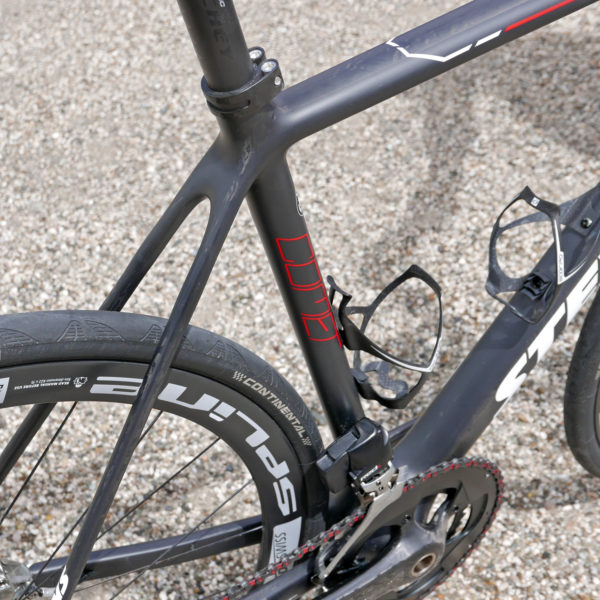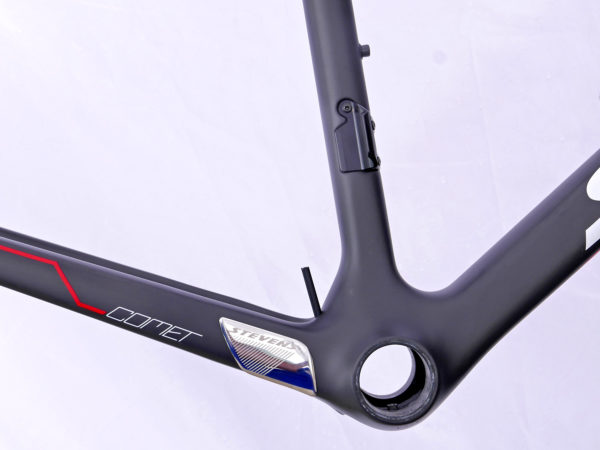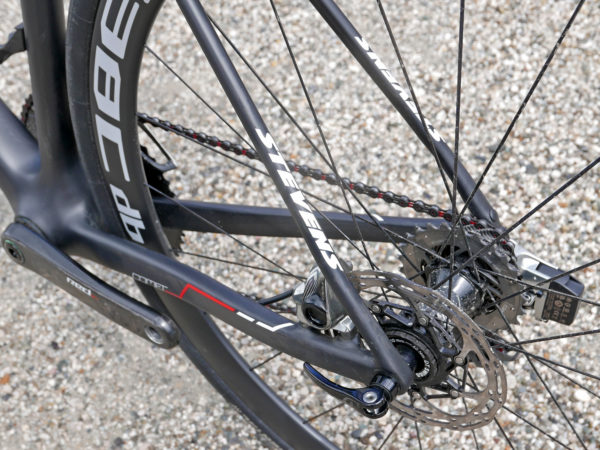Steven’s current Super Trofeo TT bike had been developed to race the Ironman and seen some good race success over the years, but hadn’t seen much innovation in recent years. That’s set to change with an all-new Volt triathlon bike that takes a new look at aerodynamics with big updates in both integration & the adjustability that will get more riders into their own optimal aero position. At the same time, Stevens has taken their lightweight road racing Comet which we got a preview of last summer in its rim brake guise, finished some last bits of development, and gotten it and its new road disc brake Comet Disc ready for production. Get a closer look at both bikes after the break…
Stevens Volt triathlon bike
The new from the ground up Volt is looking to replace the outgoing Super Trofeo with a much more integrated solution for top triathletes. Aero improvements were the primary driver of the new bike’s design, but maintaining power transfer efficiency was of course not overlooked. Working with the narrow profiles traditional in Tri & TT bikes, lateral stiffness is often a casualty of trying to keep deep tube sections from resulting in a heavy bike.
Stevens took a slightly different approach though, prioritizing stiffness & drivetrain efficiency since they were able to build some wider profile shapes still optimized for low drag. The Volt also benefits from using the same top-level Super Light High Modulus Fiber carbon spec & construction methods that they developed on their top light carbon road race bikes.
Integration is a big deal on the Volt, but also adjustability. Stevens worked with aero cockpit specialists Profile Design to develop the Volt’s integrated toptube Foodbox & forward located Drinking Systems. Specifically that aero drink setup is available in a couple of heights to seamlessly mesh with whatever bar position a rider chooses, and is adjustable to work with stems from 70-100mm long. A couple of bento box Foodboxes are also set to be available to transition smoothly back allowing cables to relatively cleanly enter the toptube.
The Volt is intended to be set up with Profile’s Aeria Ultimate cockpit system, offering modular adjustability to set width, length & height of basebar, pads & extensions to suit each rider.
The spine of the bike from headtube down to the bottom bracket and back to the rear axle is huge, but flattened aero sections still maintain some level of vertical compliance and allowed Stevens to work with thin carbon tubes to keep weight down. While the frameset is wide for a Tri bike at the fork crown and bottom bracket, the seattube and seatpost stay very slim to cut smoothly through the air. And a lot of that slightly wider front end gets tucked in behind the integrated drink system cowl that protects the cockpit as well from the wind.
The oversized material around the bottom bracket made for a tidy location to tuck in the integrated TRP linear pull rear brake. The oversized fork crown offers a similar solution for the fork, getting an integrated cover.
Altogether these cowls & covers mean the bike is definitely not UCI complaint in this setup, so it sticks to triathlon only. That also let Stevens build the bike with a tri-specific geometry that gets a really short toptube, plus most importantly a relatively tall headtube to accommodate the forward, but slightly upright position (more stack, less reach) that most triathletes can actually maintain for their long distance efforts on the bike.
The Volt is available only in this black/red/grey in five frame sizes from XS-XL and exclusively as a 2600€ framekit to be built up to suit individual rider & course needs. That framekit price includes the frame, fork, headset, stem, seatpost & brakes, plus the integrated Foodbox & Drinking Systems.
On top of all the adjustability of the Volt frame and stock components themselves, the Volt is part of Stevens’ full Custom Program that lets buyers work with their local dealer to build a complete bike with the exact component mix they want.
Stevens Comet Disc lightweight road bike
The lightweight Comet road bike was for the most part introduced last summer but it seems Stevens was continuing to develop its final carbon construction techniques for the bike, so now it is officially being introduced (again?) as a new 2018 bike. The outward look and the tech of the 2018 bike isn’t any different than the bike we previewed last year, but the details do get a bit more concrete. The rim brake bike gets a new weight figure of 796g (for a 58cm) with a 298g fork. That’s a bit heavier than the figure we were quoted last summer, but apparently this is more of a real world number with paint and the frame’s alloy bits – still claiming a 10% weight drop since the last version.
But beyond the rim brake bike, we were most interested to see the new Comet Disc. Last year we’d only seen a rendering, but now the bike here is in production and ready to go on sale this fall.
The bike looks to hit most of the top spec road racing tech we want, like flat mount discs, 12mm thru-axles, a tapered steerer, and thin comfortable seatstays. Stevens was still building this demo bike up with narrow tires, but it says 28mm tires will fit with plenty of clearance (the same for the rim brake bike), although the proximity to those SRAM Red eTap front derailleur batteries is always a bit worrisome.
With that the Comet Disc still manages to come in well under a kilo at 906g for a size 58cm with all the alloy bits and the extra carbon to reinforce the frame for disc brakes. The full carbon disc 1.25″-1.125″ fork isn’t too heavy either at a claimed 345g.
The disc bike gets the same updated tube shaping that the Comet saw last year. That includes an hourglass headtube, a toptube that starts wide and tapers quickly as it comes back. The boxy downtube carries over as well with fully internal routing, down to the PF86.5 bottom bracket and its integrated chainsuck protector.
The new Comet & Comet Disc are both exclusively available in Stevens’ Custom Program as well. Like with the Volt, that means that the bikes are sold as framesets – 2000€ for either rim or disc brake versions – and can be also custom configured into complete bikes with your local Stevens dealer. Both brake versions share the same road race geometry, come in the same light paint job in only black, and are available in six frame sizes from 50-60cm. A nice boost to bigger riders, Stevens rates both versions of the Comet up to a 115kg/253lb rider weight limit.
